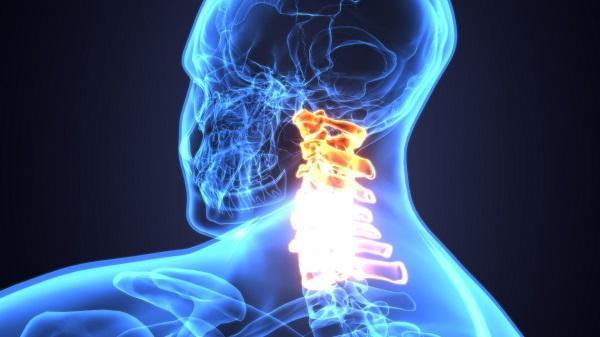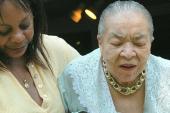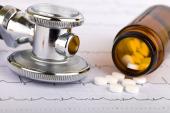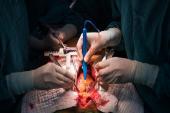Spinal Cord Stimulation Reduces Post-CABG AF: Pilot Study
In a study of 52 patients, the results were impressive, but there are lots of questions about this invasive approach.

Temporary spinal cord stimulation (SCS) before and after cardiac surgery appears to lower the burden of postoperative atrial fibrillation (AF), according to the results of a pilot study.
The procedure, which works by acting on the autonomic nervous system, reduced the risk of AF following CABG surgery by nearly 90% at 30 days when compared with usual care, reported lead investigator Alexander Romanov, MD (National Medical Research Center, Novosibirsk, Russia), at the Heart Rhythm Society 2021 Scientific Sessions.
Importantly, in this small randomized study of 52 patients, the procedure was shown to be safe, with no complications or major clinical events observed at 30 days.
“It’s well known that postoperative atrial fibrillation remains a challenging yet common complication after coronary artery bypass grafting,” said Romanov during the late-breaking clinical trial session. “It’s associated with an increased risk of mortality, stroke, MI, and hospital and ICU length stay of stay in the early postoperative period, as well as in long-term follow-up. The current therapies, such as prophylactic beta blockers, have variable efficacy and may adversely affect hemodynamics.”
SCS has been used for a number of years for treating refractory angina, said Romanov, with evidence suggesting it can reduce the use of nitroglycerin, decrease angina frequency, and improve quality of life. SCS is also used for failed back surgery, complex general pain syndromes, and peripheral neuropathy, he said.
Romanov said that several experimental studies published recently have suggested SCS might reduce AF burden and AF inducibility by inhibiting autonomic remodeling, as well as by modulating nerve growth and calcium-activated potassium channel type-2 expression. With SCS, percutaneous leads are placed using fluoroscopic guidance in the posterior epidural space at the C7 to T4 level. Temporary SCS was performed 3 days before CABG and turned off during the surgery. Once surgery was completed, SCS was turned back on in the ICU and continued for 7 days.
‘The Results Were Very Impressive’
In the study, 52 patients with a history of paroxysmal AF undergoing on-pump CABG surgery were randomized to SCS or usual care. There was no difference in the baseline characteristics between the two groups, with men making up the majority of participants (73% in the SCS/CABG arm versus 81% in the usual-care arm).
At 30 days, 30.2% of patients treated CABG alone had a diagnosis of AF compared with 3.8% of patients treated with SCS (P = 0.012). This translated into an 89% lower relative risk of new-onset AF in the SCS-treated patients. Similarly, mean AF burden on ECG monitoring and median total duration of AF episodes were significantly higher in the CABG group compared with the SCS/CABG group.
Romanov said SCS deserves further study as a therapy for preventing AF after cardiac surgery, noting that they plan to follow these patients for several years. In addition to SCS, Romanov was part of a research group that has shown the injection of a botulin toxin into epicardial fat pads, which also works by modulating the autonomic nervous system, can prevent the occurrence of AF after cardiac surgery. That approach is less invasive than SCS, but Romanov said their pilot study with SCS hasn’t revealed any safety concerns, at least in experienced hands.
Mina Chung, MD (Cleveland Clinic, OH), one of the discussants following the late-breaking trial, said postoperative AF remains the bane of hospital house staff and EP fellows. While the present study was small, “the results were very impressive,” said Chung, adding that most postoperative AF trials require 200 to 250 patients to demonstrate a meaningful treatment effect. The results seen in the pilot study, she added, “beat just about any other therapy tried out there for postoperative AF.”
Despite the praise, Chung pointed out that patients in the pilot study had paroxysmal AF at baseline and as such the results can’t be extrapolated to the general population undergoing cardiac surgery. Most importantly, the study needs to be replicated to confirm the benefit.
For Paul Freedman, MD (Mayo Clinic, Rochester, MN), it was “striking to see, in a cardiac procedure, a needle in the spine,” but he said seemingly intractable problems are solved when individuals think outside the box. Freedman, who also spoke following the late-breaking session, pointed out that the mean AF burden on ECG monitoring, while better with SCS, was small in both groups at less than 1% (0.2% with usual care vs 0.006% with SCS; P = 0.009).
“I would argue that as you look at both the control and the treated groups, if these post-AF ablation patients, we’d call it a resounding success,” said Freedman. “I think there are questions that remain to be answered as to whether the complexity of spinal cord stimulation warrants that treatment.” Another question is whether there are other means of stimulating the nervous system less invasively, added Freedman.
Michael O’Riordan is the Managing Editor for TCTMD. He completed his undergraduate degrees at Queen’s University in Kingston, ON, and…
Read Full BioSources
Temporary spinal cord stimulation (SCS) before and after cardiac surgery appears to lower the burden of postoperative atrial fibrillation (AF), according to the results of a pilot study. The procedure, which works by acting on the autonomic nervous system, reduced the risk of AF following CABG surgery by nearly 90% at 30 days when compared with usual care, reported lead investigator Alexander Romanov, MD (National Medical Research Center, Novosibirsk, Russia), at the Heart Rhythm Society 2021 Scientific Sessions. Importantly, in this small randomized study of 52 patients, the procedure was shown to be safe, with no complications or major clinical events observed at 30 days. “It’s well known that postoperative atrial fibrillation remains a challenging yet common complication after coronary artery bypass grafting,” said Romanov during the late-breaking clinical trial session. “It’s associated with an increased risk of mortality, stroke, MI, and hospital and ICU length stay of stay in the early postoperative period, as well as in long-term follow-up. The current therapies, such as prophylactic beta blockers, have variable efficacy and may adversely affect hemodynamics.” SCS has been used for a number of years for treating refractory angina, said Romanov, with evidence suggesting it can reduce the use of nitroglycerin, decrease angina frequency, and improve quality of life. SCS is also used for failed back surgery, complex general pain syndromes, and peripheral neuropathy, he said. Romanov said that several experimental studies published recently have suggested SCS might reduce AF burden and AF inducibility by inhibiting autonomic remodeling, as well as by modulating nerve growth and calcium-activated potassium channel type-2 expression. With SCS, percutaneous leads are placed using fluoroscopic guidance in the posterior epidural space at the C7 to T4 level. Temporary SCS was performed 3 days before CABG and turned off during the surgery. Once surgery was completed, SCS was turned back on in the ICU and continued for 7 days. ‘The Results Were Very Impressive’ In the study, 52 patients with a history of paroxysmal AF undergoing on-pump CABG surgery were randomized to SCS or usual care. There was no difference in the baseline characteristics between the two groups, with men making up the majority of participants (73% in the SCS/CABG arm versus 81% in the usual-care arm). At 30 days, 30.2% of patients treated CABG alone had a diagnosis of AF compared with 3.8% of patients treated with SCS (P = 0.012). This translated into an 89% lower relative risk of new-onset AF in the SCS-treated patients. Similarly, mean AF burden on ECG monitoring and median total duration of AF episodes were significantly higher in the CABG group compared with the SCS/CABG group. Romanov said SCS deserves further study as a therapy for preventing AF after cardiac surgery, noting that they plan to follow these patients for several years. In addition to SCS, Romanov was part of a research group that has shown the injection of a botulin toxin into epicardial fat pads, which also works by modulating the autonomic nervous system, can prevent the occurrence of AF after cardiac surgery. That approach is less invasive than SCS, but Romanov said their pilot study with SCS hasn’t revealed any safety concerns, at least in experienced hands. Mina Chung, MD (Cleveland Clinic, OH), one of the discussants following the late-breaking trial, said postoperative AF remains the bane of hospital house staff and EP fellows. While the present study was small, “the results were very impressive,” said Chung, adding that most postoperative AF trials require 200 to 250 patients to demonstrate a meaningful treatment effect. The results seen in the pilot study, she added, “beat just about any other therapy tried out there for postoperative AF.” Despite the praise, Chung pointed out that patients in the pilot study had paroxysmal AF at baseline and as such the results can’t be extrapolated to the general population undergoing cardiac surgery. Most importantly, the study needs to be replicated to confirm the benefit. For Paul Freedman, MD (Mayo Clinic, Rochester, MN), it was “striking to see, in a cardiac procedure, a needle in the spine,” but he said seemingly intractable problems are solved when individuals think outside the box. Freedman, who also spoke following the late-breaking session, pointed out that the mean AF burden on ECG monitoring, while better with SCS, was small in both groups at less than 1% (0.2% with usual care vs 0.006% with SCS; P = 0.009). “I would argue that as you look at both the control and the treated groups, if these post-AF ablation patients, we’d call it a resounding success,” said Freedman. “I think there are questions that remain to be answered as to whether the complexity of spinal cord stimulation warrants that treatment.” Another question is whether there are other means of stimulating the nervous system less invasively, added Freedman.
Disclosures
- Romanov reports research grants from Boston Scientific and Biosense Webster.





Comments